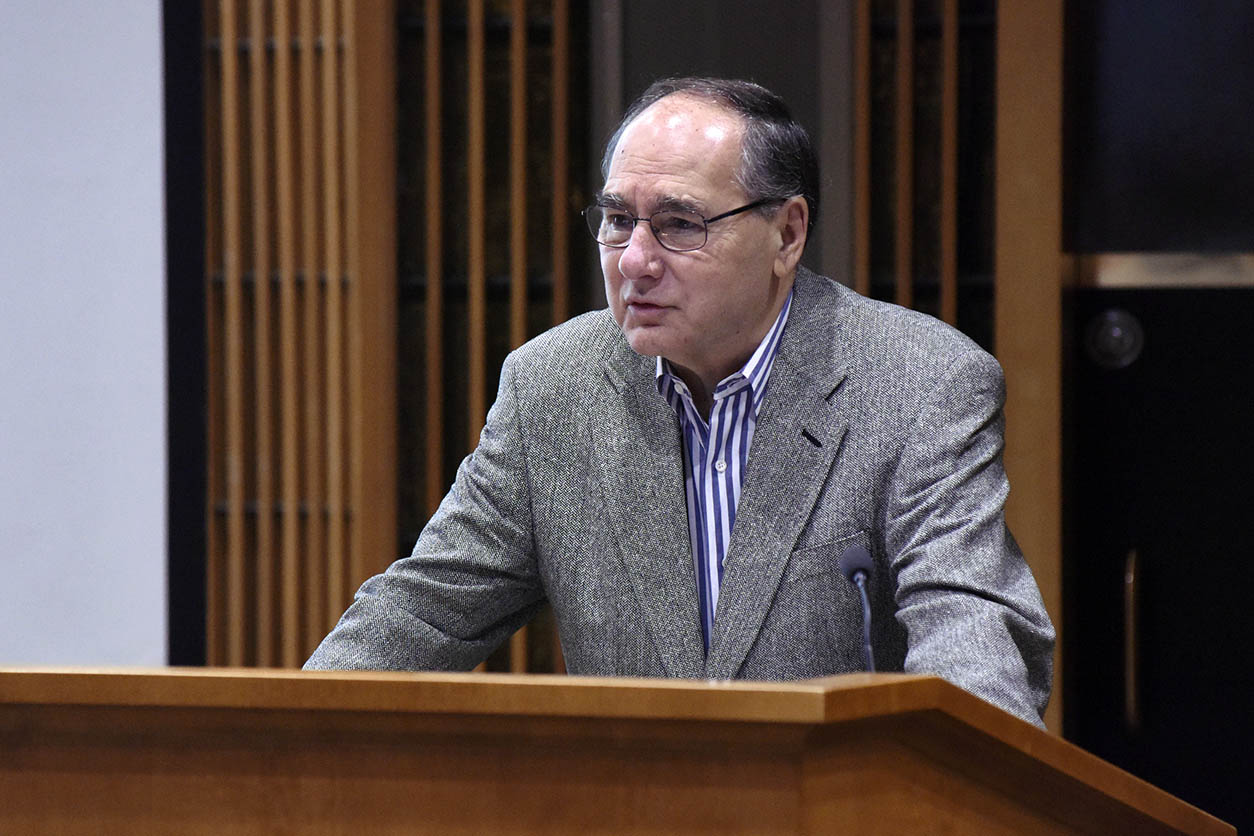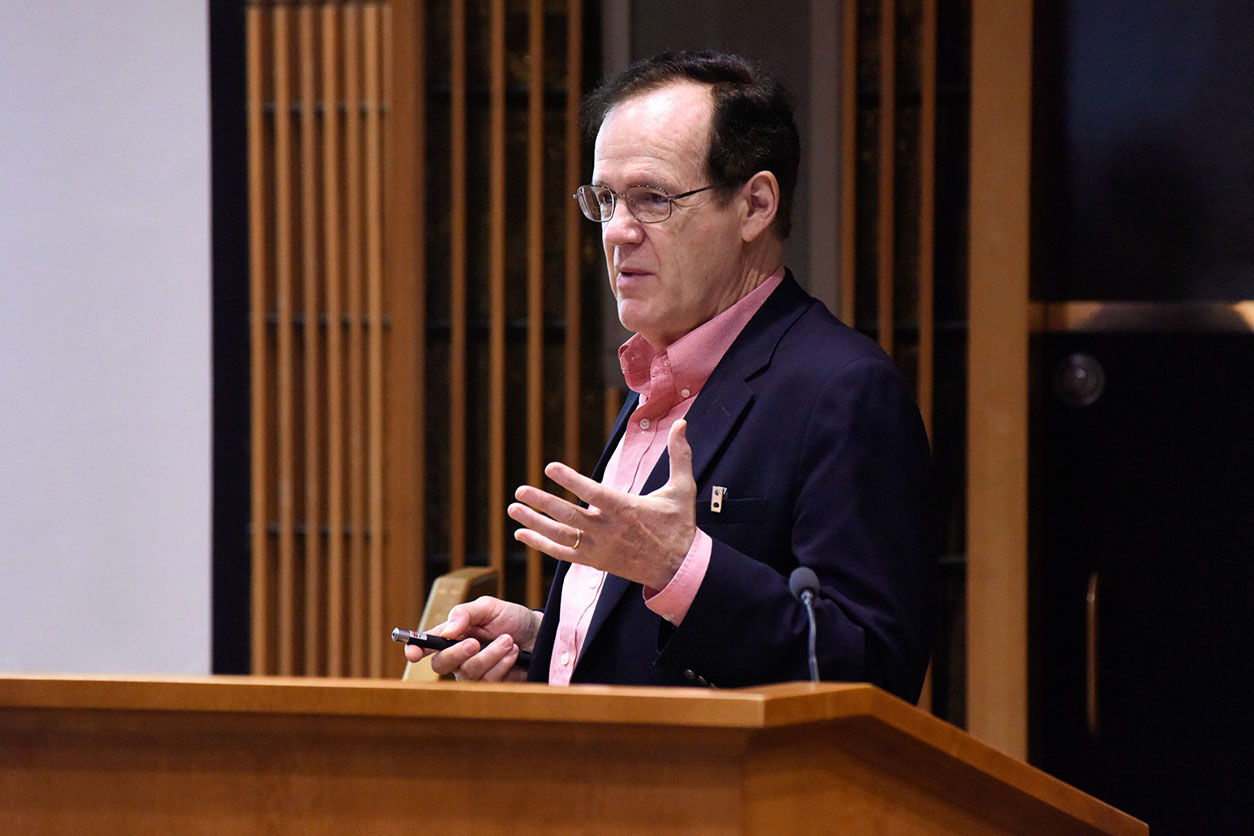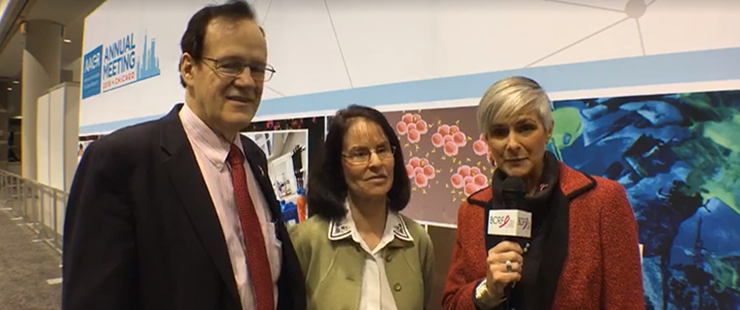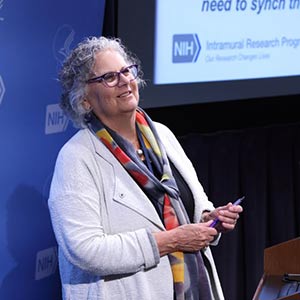 Benita is a Swanlund Professor of Molecular and Integrative Physiology at the University of Illinois Urbana-Champaign. (Photo courtesy of Steve McCaw)
Benita is a Swanlund Professor of Molecular and Integrative Physiology at the University of Illinois Urbana-Champaign. (Photo courtesy of Steve McCaw)As a married couple, University of Illinois at Urbana-Champaign Professors Benita Katzenellenbogen, Ph.D., and John Katzenellenbogen, Ph.D., are used to sharing, but their joint presentation at the NIEHS Distinguished Lecture May 14 was the first time they gave a science talk together.
Benita Katzenellenbogen studies nuclear hormone receptors and their co-regulator protein partners. John Katzenellenbogen focuses on how small molecules that activate these receptors can be developed for novel medical therapies. Their complementary research interests were showcased in their lecture, 'Estrogen Receptor Integrative Genomics and Signaling Networks in Breast Cancer and Estrogen Target Tissues.' Kenneth Korach, Ph.D., head of the NIEHS Receptor Biology Group, hosted their talk.
'The Katzenellenbogens have been an outstanding research team for a number of years,' Korach said. 'Individually, they have made many notable contributions to the biomedical research field of hormones, breast cancer, hormone receptor action, and anti-hormonal therapeutics.'
 'Together, in joint studies, they have been highly acclaimed as a collaborative research team with great knowledge and insights to the field of breast cancer and hormone action,' Korach said. (Photo courtesy of Steve McCaw)
'Together, in joint studies, they have been highly acclaimed as a collaborative research team with great knowledge and insights to the field of breast cancer and hormone action,' Korach said. (Photo courtesy of Steve McCaw)Estrogen receptors in breast cancer
Benita began the seminar by explaining that transcription factors estrogen receptor alpha (ERalpha) and beta (ERbeta) are part of a large nuclear receptor superfamily. She said the estrogen receptor (ER) regulates hundreds of genes, and she and John first studied it in breast cancer cells in the early 2000s. She found that 5% of the cells’ genes were estrogen-regulated, and that several mutations in ERalpha are present in some ER positive breast cancers.
'These mutations are found in about 40% of metastatic breast cancers and are constitutively active, meaning that the receptor does not need a ligand [binding partner] to be active,' Benita said. 'They are resistant to many drugs used to treat breast cancer, such as aromatase inhibitors.'
She also discussed other factors that contribute to breast cancers and do not respond to hormone treatment. In studies of RNA gene expression, she found two factors that were highly upregulated in hormone resistant cells and human tumors. They are 14-3-3zeta, which is a scaffolding protein, and the transcription factor FOXM1. Her team believes these two factors play major roles in regulation of the cell cycle and prevention of cell death, which contribute to the aggressiveness of these tumors.
Multiple sclerosis
In his portion of the seminar, John discussed the potential of the ERbeta ligand, known as chloroindazole, in multiple sclerosis (MS) studies. In an MS mouse model called experimental autoimmune encephalomyelitis (EAE), untreated animals develop clinical symptoms, but animals treated with chloroindazole fail to exhibit symptoms, such as muscle weakness.
 John is a Swanlund Professor of Chemistry at the University of Illinois Urbana-Champaign. (Photo courtesy of Steve McCaw)
John is a Swanlund Professor of Chemistry at the University of Illinois Urbana-Champaign. (Photo courtesy of Steve McCaw)He said the hypothesis is that chloroindazole mimics the natural ligand for ERbeta that is different from estradiol, which is a form of estrogen. Together with a collaborator, the Katzenellenbogens screened candidate molecules that could be naturally produced in the mouse and were selectively active on ERbeta.
One of the molecules they found was 5-androstene-3beta,17beta-diol. Although it was not as effective as chloroindazole, it was still different from estradiol and was part of a natural neuroprotective process.
'We think what is happening is that the abundant steroid precursor dehydroepiandrosterone can be broken down to make testosterone or can branch to make estradiol or some other small molecules,' John said. 'The other molecules are all ERbeta ligands.'
Currently, he is working to catalogue compounds that appear to reduce MS symptoms. He is looking for commercial partners to help with the effort.










